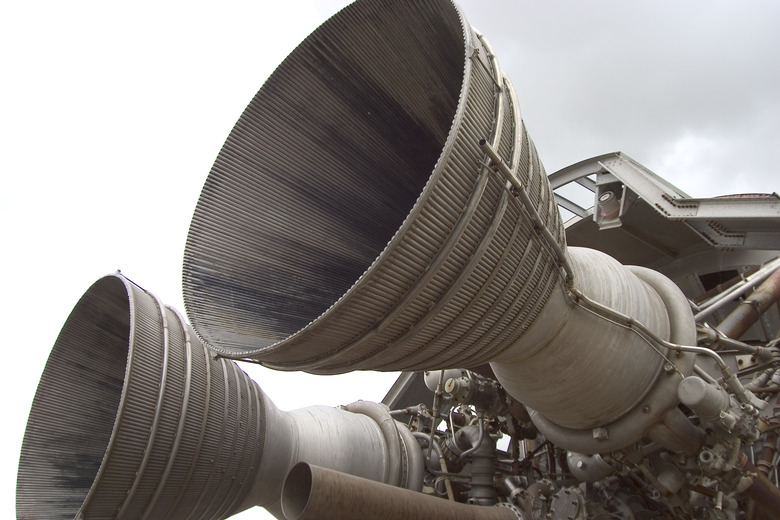What Are The Different Kinds Of Rockets?
Known to the Chinese as far back as the 11th century, the rocket – a machine that uses the expulsion of matter to create thrust – has seen various applications, ranging from warfare to space travel. Though modern-day rocket technology bears little resemblance to its ancient roots, the same guiding principle remains its focal point. Rockets today are generally divided into a few different types.
Solid-Fuel Rocket
Solid-Fuel Rocket
The oldest and simplest of the types of rockets use solid fuel for thrust. Solid-fuel rockets have been around since the Chinese discovered gunpowder. This type is "monopropellant," meaning several solid chemicals are combined to make a single mixture. This mixture is then placed in the combustion chamber awaiting ignition.
One of the disadvantages of this kind of fuel type is that once it starts to burn there is no way to stop it and thus it will go through the entirety of its fuel supply until it runs out. Although relatively easy to store compared to liquid fuels, some ingredients used for solid fuel, such as nitroglycerin, are highly volatile.
Liquid-Fuel Rocket
Liquid-Fuel Rocket
Liquid-fuel rockets, as the name suggests, use liquid propellants to create thrust. First developed by Robert H. Goddard, the man touted as the father of modern rocketry, it was successfully launched in 1926. The liquid-fuel rocket also propelled the space race, first sending Sputnik, the world's first satellite, into orbit with the use of the Russian R-7 booster, and finally culminating with the launch of Apollo 11 using the Saturn V rocket. Liquid-fuel rockets can be monopropellant or bipropellant in design, the difference being that bipropellant is composed of fuel and oxidizer, a chemical that allows the fuel to burn when mixed.
Ion Rocket
Ion Rocket
More efficient than conventional as rocket technology, the ion rocket uses electrical energy from solar cells to provide thrust. Rather than forcing pressurized hot gas out of a nozzle – which limits how much thrust you can achieve by how much heat the nozzle can stand – the ion rocket propels a jet of xenon ions whose negative electrons have been stripped by the rocket's electron gun. The ion rocket was tested in space during Deep Space 1 on November 10, 1998, and again in SMART 1 on September 27, 2003.
Plasma Rocket
Plasma Rocket
One of the newer types of rockets in development, the Variable Specific Impulse Magnetoplasma Rocket (VASIMR), works by accelerating plasma produced by stripping negative electrons from hydrogen atoms inside a magnetic field and expelling them out the engine. Touted to decrease the time it would take to reach Mars into just a matter of months, the technology is currently undergoing testing to increase both power and endurance.
Cite This Article
MLA
Johnson, Steve. "What Are The Different Kinds Of Rockets?" sciencing.com, https://www.sciencing.com/different-kinds-rockets-8552176/. 13 March 2018.
APA
Johnson, Steve. (2018, March 13). What Are The Different Kinds Of Rockets?. sciencing.com. Retrieved from https://www.sciencing.com/different-kinds-rockets-8552176/
Chicago
Johnson, Steve. What Are The Different Kinds Of Rockets? last modified August 30, 2022. https://www.sciencing.com/different-kinds-rockets-8552176/
